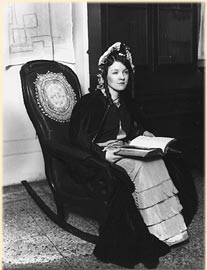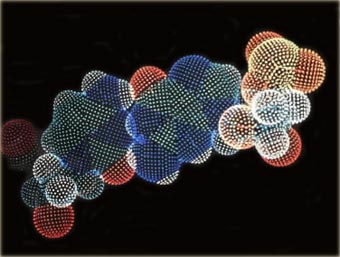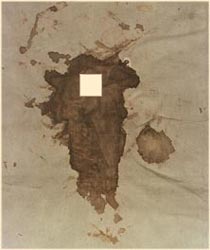
DNA analysis offers the fulfillment of a historian's dream - the ability to unlock the secrets of the past.
The investigation of the Chicago Historical Society's cloak inevitably leads to the question of whether DNA analysis could prove that it was wet with Abraham Lincoln's blood. Although this research may ultimately lead to mitochondrial DNA testing, researchers must first answer several critical questions.
What does Lincoln's DNA look like?
An authenticated reference sample of Lincoln's DNA must be compared with any DNA found on the cloak. Several alleged Lincoln hair and blood samples have been identified but there are missing links in the documented provenance, or ownership history, of the specimens. There is currently no authoritative reference sample of Lincoln's DNA available for a comparative analysis. Can the investigators identify a definitive source of Lincoln's DNA for a comparative analysis?
Would DNA testing damage the cloak?
Aged blood is difficult to dissolve in a solution, which is required for analysis, and genetic material can degrade over time. If DNA analysis were done today, scientists would need to remove one square inch of fabric from the cloak to extract enough mitochondrial DNA for identification testing. This would compromise the integrity and preservation of the cloak. Can researchers identify less damaging techniques for sampling the stains on the cloak?
Bloody stain on the sheet attributed to Abraham Lincoln's deathbed. The projected sample size needed for DNA testing is indicated by the empty square (CHS 1920.253).



INVESTIGATION
BY PRIVATE EYES
The Collaborative Investigation of the
Lincoln Relics
Overview
DNA Analysis An
Introduction to DNA Analysis
Partners in Crime
The
Collaborative Investigation
Weighing the Evidence Evaluating
the Historical and Scientific Evidence
What if there is more than one type of DNA on the cloak?
Mary's cloak may have been wet with Henry Rathbone's blood as well as her husband's. Rathbone, a guest in the Lincolns' box seat, was slashed by assassin John Wilkes Booth's knife and bled profusely. The cloak has been handled by many people through the years who may have left skin cells and DNA on it. Could the investigators distinguish Lincoln's or Rathbone's DNA from other genetic material on the cloak?
CHS
member modeling the cloak attributed to Mary Todd Lincoln, c. 1930
(DN-090913).



